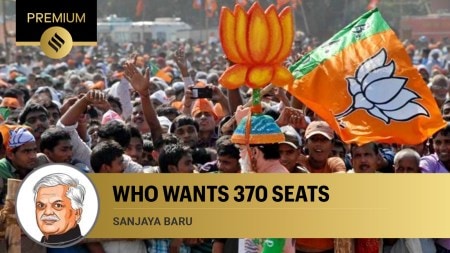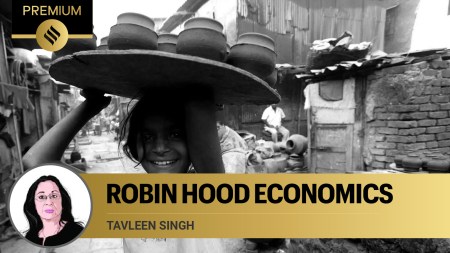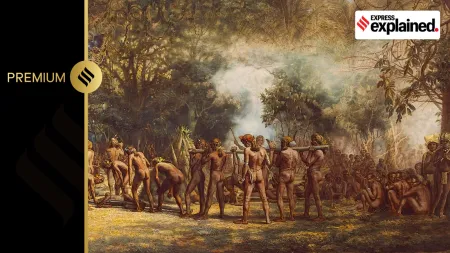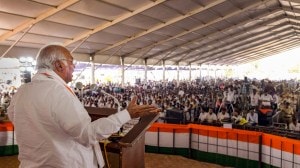- India
- International
Where India’s trade with Israel and Iran stands, and whether regional tensions could impact it
India-Israel trade has doubled in the last five years, while the value of India-Iran trade came down in the same period. Could the Indian economy be affected amid tensions in the Middle East?
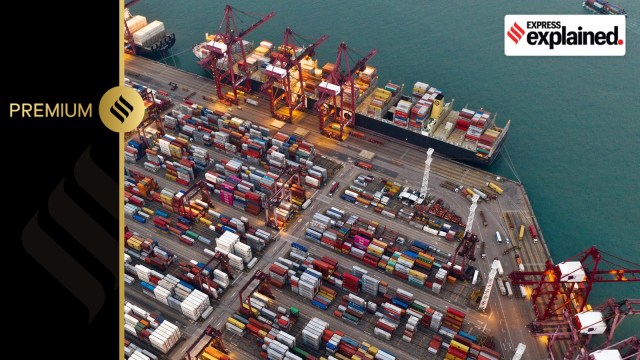 In 2022-23, Iran was India’s 59th biggest trading partner, while Israel ranked 32nd. (Via Pixabay)
In 2022-23, Iran was India’s 59th biggest trading partner, while Israel ranked 32nd. (Via Pixabay)
Iran’s attack on Israel earlier this week has sparked tensions in the Middle East and beyond. India, which has friendly ties with both the countries, has expressed “serious concerns” about escalation of hostilities.
An escalation could also worry traders in the region and spook markets. How does India trade with these two countries? And what could be the impact of renewed regional tensions on the Indian economy? We explain.
First, India-Israel trade has doubled in the last five years.
India established diplomatic relations with Israel in 1992. Since then, trade between two countries has been rising significantly, from around $200 million in 1992 (comprising primarily of diamonds), to $10.7 billion (excluding defence) in the Financial Year 2022-23.
A sharp rise has happened in the last four years, when trade doubled — from $5.56 billion in 2018-19 to $10.7 billion in 2022-23. Between 2021-22 and 2022-23, trade increased by 36.90 per cent — from $7.87 billion to $10.77 billion.
In 2022-23, India’s exports to Israel were worth $8.45 billion, while New Delhi’s imports from Israel stood at $2.3 billion, leaving a trade surplus of $6.13 billion in India’s favour.

In FY 2023-24, the bilateral trade reached $5.75 billion during the first 10 months (April-January). Composing 0.92 per cent of India’s total trade of $1,167 billion during FY 2022-23, Israel was India’s 32nd biggest trading partner that year.
According to the Ministry of External Affairs’ (MEA) brief on foreign relations, India is Israel’s second largest trading partner in Asia and the seventh largest globally.
What are the main components of India’s trade with Israel?
Based on India’s 8-digit Harmonized System code, under which trade items are classified, the most valued items exported by India to Israel included diesel, diamonds, aviation turbine fuel, radar apparatus, Basmati rice, T-shirts, and wheat.
Two items, diesel and diamonds, accounted for 78 per cent of total exports during 2022-23.
On the other hand, India imported items such as space equipment, diamonds, potassium chloride, mechanical appliances, turbo jets of a thrust > 25KN, and printed circuits.
Value of India-Iran trade came down in the last five years.
In 2022-23, Iran was India’s 59th biggest trading partner, with bilateral trade reaching $2.33 billion.
India’s trade with Iran has seen a contraction in recent years, before an uptick in the FY 2022-23. It increased by 21.77 per cent — from $1.94 billion in 2021-22 to $2.33 billion in 2022-23.
However, in the three preceding years (2019-20, 2020-21 and 2021-22) it saw a contraction in the range of 9.10 per cent to 72 per cent year-on-year, in the wake of US sanctions on Tehran. Trade with Iran also dwindled from the high of $17 billion in 2018-19 to $4.77 billion in 2019-20, and further to $2.11 billion in 2020-21.
Of the $2.33 billion trade in 2022-23, India’s exports to Iran accounted for $1.66 billion, while New Delhi’s imports from Tehran stood at just $0.67 billion, leaving a trade surplus of about $ 1 billion. In FY 2023-24, the bilateral trade Iran reached $1.52 billion during the first 10 months (April-January).
During FY 2022-23, bilateral trade was 0.20 per cent of India’s total trade. India mainly exported agricultural goods and livestock products. These included meat, skimmed milk, buttermilk, ghee, onions, garlic, and canned vegetables.
India imported methyl alcohol, petroleum bitumen, liquified butanes, apples, liquified propane, dates, and almonds from Iran.
Israel and Iran do not have significant FDI in India
As far as Foreign Direct Investment (FDI) is concerned, Israel is not a very significant source of investment for India. The country accounts for just 0.4 per cent of the total FDI inflows between April 2000 and December 2023.
According to the Department for Promotion of Industry and Internal Trade (DPIIT), FDI from Israel to India stood at just $288 million in this period.
As compared to Israel’s FDI in India, Indian firms have made a higher investment in Israel. “Cumulative Overseas Direct Investment (ODI) from India to Israel from April 2000 to May 2023, was around US$ 383 million. Indian companies are marking their presence in Israel through mergers and acquisitions and the opening of branch offices. Indian companies are also making a mark in the Israeli innovation ecosystem,” according to the MEA.
As far as investment ties with Iran are concerned, India is developing the first phase of the Shahid Beheshti Port at Chabahar, for improving India’s connectivity and trade ties with the Middle East and Central Asia.
“In 2021, India provided six mobile harbor cranes to the port. Since the operationalization in December 2018, the port has handled cargo from Russia, Brazil, Germany, Bangladesh, Thailand, Romania, UAE, Kuwait and Australia among other countries,” according to the MEA.
The FDI inflows from Iran to Iran were recorded at just $1 million from April 2000 to December 2023.
How could Middle East tensions impact the Indian economy?
According to the think tank Global Trade Research Initiative (GTRI), there is unlikely to be any rise in petrol prices in India as a result of ongoing tensions in the Middle East.
Although, there could be some impact due to tensions in the Red Sea, which lies at the crucial trade route connecting Europe and Asia. Roughly 12 percent of global trade is dependent on this route.
Since November 2023, Yemen-based militants called the Houthis have fired at some ships passing through this region. They say it is in opposition to Israel’s military action in the Gaza Strip, while Israel accuses Iran of backing the Houthis.
“India’s trade problems due to shipping disruption in the Red Sea could get worse because of the new conflict between Iran and Israel. However, this conflict might not affect petrol prices in India. The conflict makes the situation in West Asia very unstable, which could force projects like the Middle East-Europe Economic Corridor (IMEC) to remain on paper for a long time,” said Ajay Srivastava, founder, the GTRI.
On the impact on petroleum prices, Srivastava said, “The ongoing conflict is unlikely to disrupt crude oil and gas production significantly since major producers like the USA, Russia, and North Sea operators are not in the conflict zone, and Saudi Arabia has not been directly involved.”
“However, shipping disruptions in the Red Sea, which have forced longer routes around Cape of Good Hope for trade with Europe and North America’s east coast, might lead to higher oil and gas prices. In India, the impact on consumers may be minimal as the government could offset price increases by reducing taxes,” he added.
More Explained
EXPRESS OPINION
Apr 30: Latest News
- 01
- 02
- 03
- 04
- 05


